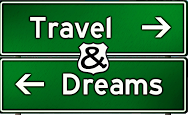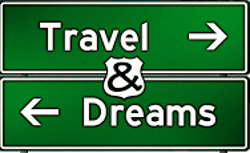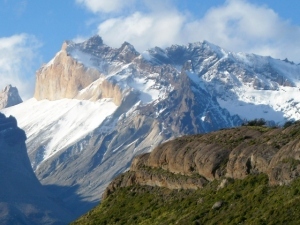
Andreu Ródenas
In my trip to Patagonia and Tierra de Fuego I spent a few days in Chile. The Chilean part of Patagonia is much less than the arid and windy part of Argentina as the Andes makes natural barrier and precipitation such as rain and snow are huge throughout the year. These rains and snow caused water to be the dominant element of life and fauna of this place.

The sky in the Chilean Patagonia
In the Chilean Patagonia there are fjords, lakes, glaciers, islands, rivers, volcanoes and endless forests. The southern of Chile contrasts with deserts of the north of the country, here the water, ice and greenery flood all places resulting in unique landscapes and spectacular as they aren’t in other places of the earth . We visited two national parks in the four days we spent in the city of Puerto Natales just 300 km from the Strait of Magellan. This remote area of the world still preserves the beauty of nature, and no escape from modern life, many aspects of their ancestral people. The footprint of tourism exists but has not yet changed the lives of very few inhabitants of the very few towns there. Surely dedication to fishing and livestock has dropped in favor of the creation of services for the tourism but surely this has enabled many of these people have had to emigrate for economic reasons only.

Torres del Paine National Park

Puerto Natales
At first trip to Iguazu Falls, Patagonia and Tierra de Fuego was thought only to visit the Argentine side, but we could not resist the temptation of visiting some of the Chilean national parks and the truth, I can not imagine a trip to Patagonia without at least spend a few days in Puerto Natales and Punta Arenas to go to visit the national park of Las Torres del Paine.

Welcome to Puerto Natales
We were renting a car in El Calafate and we went south on the famous road that crosses the whole of Argentina north to south. This road is a reference for adventurous travelers because it has 5,500 km of route and more than half are gravel tracks or “ripio” as they say. 500 km south of El Calafate is a mining town called Rio Turbio and bordering the Chilean city of Puerto Natales, are 500 km of lines that never end, wind and land of ocher colour without people, where the life is only put by the sheep and cows grazing on a land of ñandús and some wild guanacos, it is a monotonous landscape, an inhospitable and harsh land that is only broken by some “oasis “or some estancia (ranch) alone.

Ñandús. Patagonia Argentina

From El Calafate to Puerto Natales. Patagonia

From El Calafate to Puerto Natales. Patagonia
Rio Turbio has this name because the its water takes the dark colour due to the coal mines there are, those mines are the livelihood of the entire community, also have the means of subsistence sailing gas to the Chileans who from the other side of the border come close to filling the tanks due to the price difference, to survive in these latitudes any savings are very important.

Flamingos in Rio Turbio
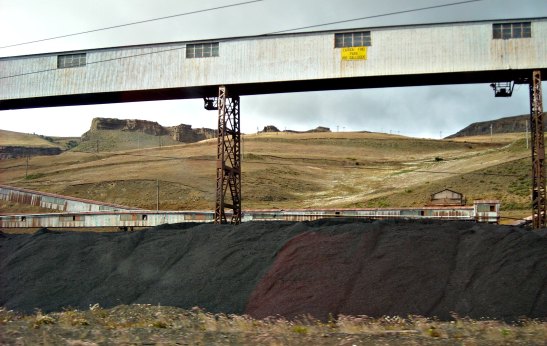
Coal Mines in Rio Turbio
The Argentine border crossings remembered us those from the 50s and 60s in the dictatorship, with police unfriendly and poorly groomed, facilities and left semi-abandoned. Rather the Chilean border was much more modern and prepared, here certainly noticed the difference between the wealth of the two neighboring countries. Once in Puerto Natales we decided to go a couple of days in Las Torres del Paine and make a day trip visiting a fjord and some glaciers in the Chilean side. In fact, this trip helped us to visit the Torres del Paine park without having to make the 120 km and other back between Puerto Natales and the park. Along the way we stop to visit the Parque Nacional Bernardo O’Higgins located just halfway into the fjord called Ultima Esperanza, in this park we met glaciers Balmaceda and Serrano, to to approach the glacier Serrano we walk about an hour in a forest rather was a botanical garden.

Serrano Glacier. P.N. Bernardo O’HIggins

Las Torres del Paine
After this stop, and since leaving the fjord we go up the river in a zodiac for more than 30 kms to enter the Parque Nacional Torres del Paine. In one day you can visit it, but the visit will be very short but I speak not go there to do some of the treks there, I leave that for the most experienced mountaineers. Simply cross it in its major tracks by car stopping in the most emblematic sites it requires a full day. I won’t lie you if I tell you that this site is probably one of the best tours I’ve ever done just with the waterfalls of Iguazu in northern Argentina, the Grand Canyon in Colorado (USA) and Mt.Cook New Zealand.

Inside the boat on the way to P.N.Torres del Paine
As it’s known than the images worth more than thousand words I leave you quite a large collection of our visit to Torres del Paine National Park and Bernardo O’Higgins National Park

Las Torres del Paine

Iceberg on the Grey Lake. P.N. Torres del Paine
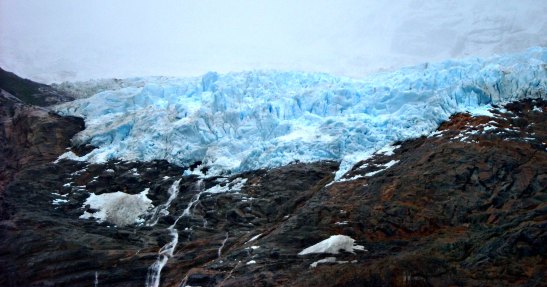
Balmaceda Glacier. P.N. Bernardo O’HIggins

Pehoe Lake. P.N.Torres del Paine

Ultima Esperanza fjord from Puerto Natales

From the shelter Las Torres to the shelter Los Cuernos. P.N.Torres del Paine

Serrano Glacier. P.N. Bernardo O’HIggins
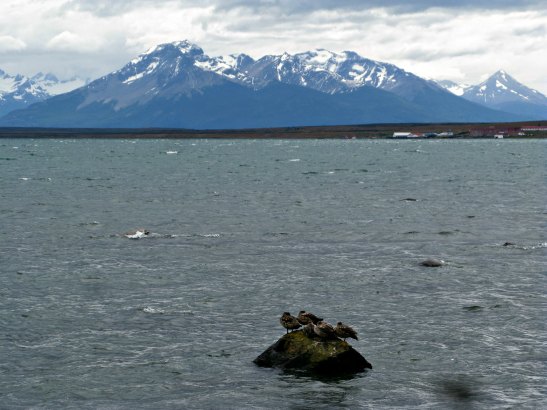
Ultima Esperanza Fjord from Puerto Natales

P.N. Torres del Paine

Los Cuernos. Torres del Paine

Los Cuernos. Torres del Paine
The articles I’v written related with Chile are:
